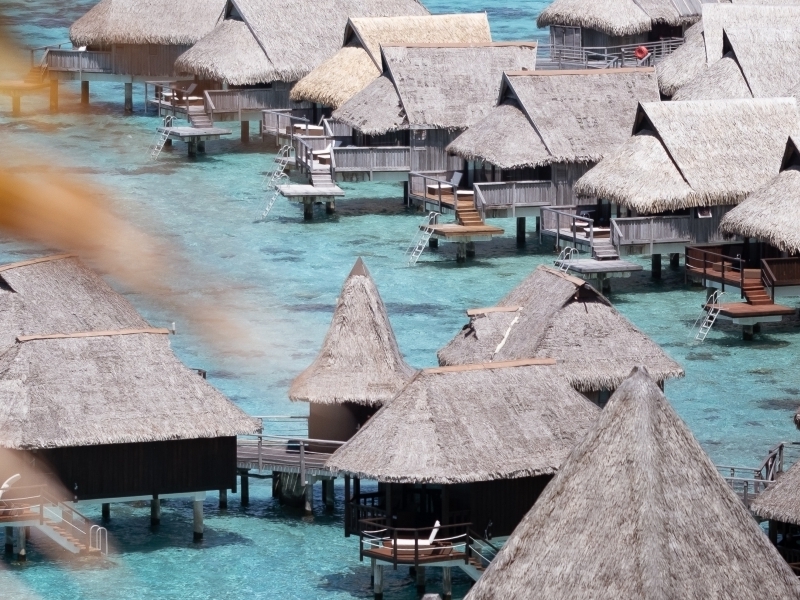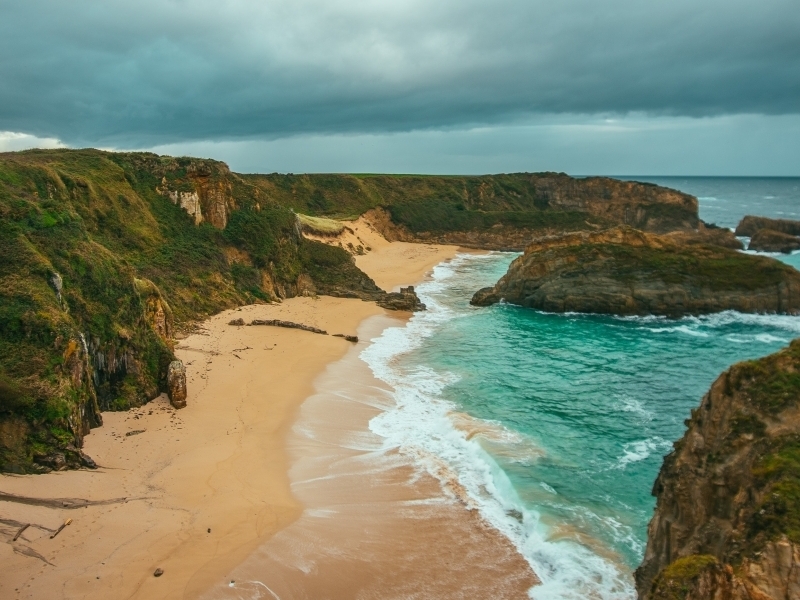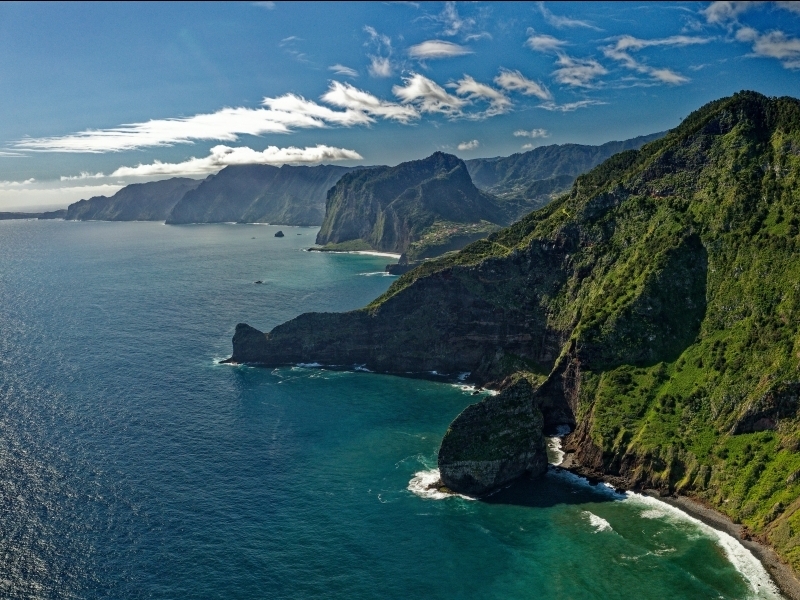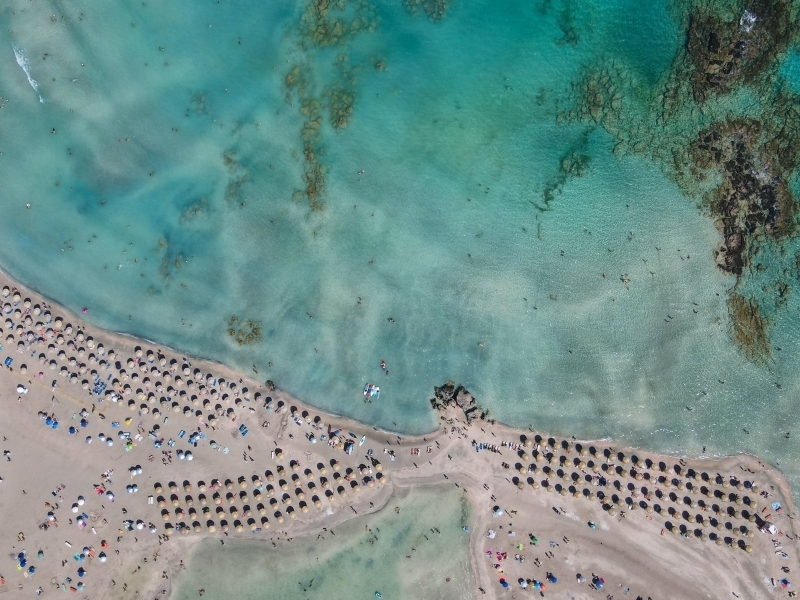News and Testimonials

Pink sand and swimming with pigs: these are the 10 most peculiar beaches in the world
All over the world, nature left unique and unusual landscapes on these paradisiacal beaches. Where are they.
Beach vacations are one of the favorite destinations for travelers. We have beautiful beach options in Argentina, and we are even close to great paradises such as those located in Brazil.
But for those looking for even more beauty and a touch of rarity, nature took care of providing some extremely unusual beaches throughout the world that are worth visiting:
PLAYA PIG (BIG MAJOR, BAHAMAS)
This is a favorite experience among the thousands of tourists who visit the Bahamas islands each year. The truth is that it is not well known how these pigs that inhabit the beach arrived. According to the country's official tourism site, Big Major Key is uninhabited and the pigs are not native to the island. Some say they were left behind by a group of sailors who planned to return and cook them. Others, that the pigs swam from a nearby shipwreck. Wherever they come from, there are now around 20 pigs and piglets leading an easy life, with daily visits from Bahamians and tourists. If you choose to stay in Nassau or the Exuma Islands, you can easily book a day trip to see the swimming pigs. An adventure that includes a boat tour of the Exuma Keys, a true tropical paradise.
GLASS BEACH (CALIFORNIA, UNITED STATES)
For some time, many clowns were used as garbage dumps in which tons of waste were thrown. This is precisely what happened in the mid-20th century on the coast of Fort Bragg, a city located in Mendocino County, in the US state of California. In 1967, the authorities closed the area and, for many years, carried out programs to correct the damage. Over time, the waves eroded materials such as glass and ceramics, causing the small pieces of glass to stop being sharp In fact, they turned them into a kind of colored sand that now continues to cover the place. Thus, today this place houses a famous glass beach that arouses great curiosity among tourists.
ELAFONISI (CRETE, GREECE)
Elafonisi is located in the extreme southwest of Crete. The island is lined with sand dunes with marine daffodils and jupiners. Exotic beaches of white sand and turquoise water, reminiscent of the Caribbean, are formed on both sides of the peninsula. The sand is pink in many places, taking its color from millions of crushed snails, as reported from the Cretan beach site. The road to Elafonisi is narrow and twisty, but the beauty of the landscape is dazzling. Near the breaking point of the peninsula, the sea water does not exceed a meter in depth, creating a small lagoon. You can easily cross the lagoon to reach the opposite site of the peninsula. And the beaches on both sides of the island are less crowded and the most beautiful, with incredible blue colors.
VAADHOO (MALDIVES)
In this country there are numerous islands, which have diverse landscapes and extreme activities to carry out, but not everyone has the bioluminescence that characterizes this coast. Vaadhoo in Maldives offers all its visitors the possibility of observing a brilliant ocean that captivates anyone, having a dark enough night and with the natural movement of the ocean, it is possible to capture this incredible phenomenon. This territory is completely uninhabited, however, due to its great bioluminescence characteristic, it attracts many tourists from the other islands. Like the rest of the coasts, here it is possible to carry out aquatic activities such as snorkeling, however, its greatest attraction comes at sunset. Diving at night is the perfect occasion to observe this phenomenon.
GIANT'S CAUSEWAY (GIANT'S CAUSEWAY, NORTHERN IRELAND)
There is nothing modest about the coast of Northern Ireland. Along the famous Costa de la Calzada there is one view more beautiful than the other. The rugged Dunluce Castle ruins, the pale cream sands of Whiterocks Beach, or the breathtaking views of the Carrick-a-Rede Rope Bridge are just a few of the magnificent attractions. But there is a sight that stands out as truly spectacular: the Causeway of the Giants. What is seen between the hills are thousands of basalt columns that fall into the Atlantic Ocean. It's an epic sight, with 40,000 or more of these hexagonal-shaped steps, dating back to a volcanic era nearly 60 million years ago. It is a truly special place. A pleasant walk of just under a kilometer leads to the Causeway itself, where you can jump over the rocks, explore the surrounding hills, or simply sit back and contemplate the puzzling geology that has led to one of Europe's most remarkable natural sites. Here, the light changes throughout the day, strikingly beautiful from crisp greens and grays to a warm tobacco brown.
ESCONDIDA BEACH (MARIETAS ISLANDS, MEXICO)
The Playa del Amor or Playa Escondida has gone around the world through a photograph: a beach trapped inside a cavern with the roof collapsed. This setting is located in the Islas Marietas National Park, a small archipelago that is recognized as a Biosphere Reserve. The boat trip is quite an experience, since during the trip dolphins are sighted and in migration season, humpback whales, giant manta rays and orcas. When the boat arrives at the archipelago, you can see that it is made up of two main islands: Isla Larga and La Redonda. However, tourists always flock to Playa del Amor, which is reached by swimming through a tunnel of volcanic rock. The beach is small and you are only allowed 30 minutes in groups of no more than 15 people.
PRAIA FORMOSA (MADEIRA, PORTUGAL)
Praia Formosa is a large public beach in Madère and a complex consisting of four black sand and pebble beaches. Located in the western part of Funchal, Praia Formosa is the largest public beach in the region. This beach is connected with the Promenade do Lido and the Paseo that connects it with Câmara de Lobos. This Formosa Spa Complex consists of four sandy beaches, known as "Praia Nova", "Praia Formosa", "Praia dos Namorados" and "Praia do Areeiro". On this Portuguese island in the middle of the Atlantic Ocean, there are few sandy beaches. One of them is Praia Formosa, whose sands are dark black due to its volcanic origin.
PRAIA DAS CATEDRAIS (GALICIA, SPAIN)
On this beach you can see a natural monument with a supernatural dimension. It is a true cathedral of the sea. The step that forms the so-called Cantabrian platform reaches the category of geological monument here. On the cliffs, the sea has sculpted a series of arches, columns and vaults over 30 meters high that lead to the area between the Augasantas and Carricelas beaches and known to tourists as Praia das Catedrais.
RED SANDS COAST (PRINCE EDWARD ISLAND, CANADA)
It is a part of Canada that is reminiscent of the Mediterranean for its 800 kilometers of sandy beaches and reddish sandstone that when summer arrives are covered with purple and pink flowers. The Red Sands Shore region is full of artisans, galleries, and architecture. You can enjoy gastronomy, theater and culture. There is a produce stand on the dock or on the road and it is undulating terrain, offering the most perfect scenic drive - one of the favorite ways to enjoy the island's pastoral scenery.
KOUROU (FRENCH GUAYANA)
Kourou, better known as the green beach, is in French Guiana and exhibits a beautiful green tapestry with a velvety texture and soft to the touch. It owes its color to the fact that the sand in the ground mixes with a tiny semi-precious stone called Olivine.
Source: https://www.cronista.com/clase/break/arena-rosa-y-nadar-con-cerdos-estas-son-las-10-playas-mas-peculiares-del-mundo/










